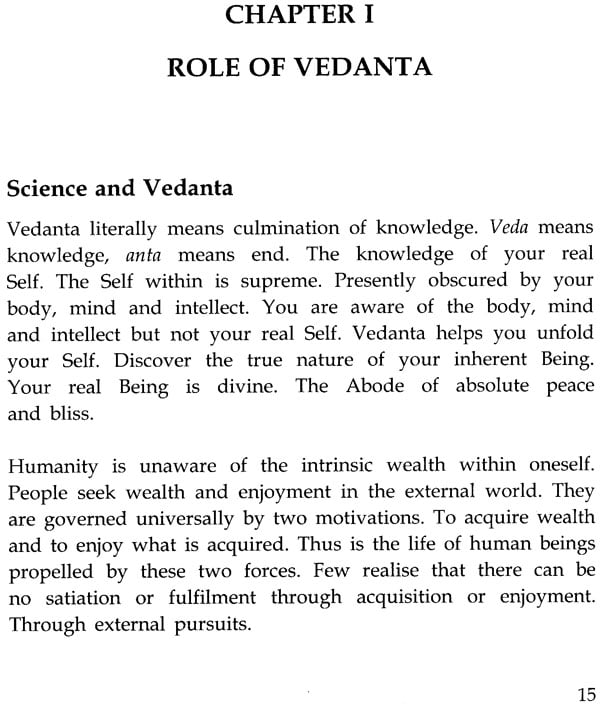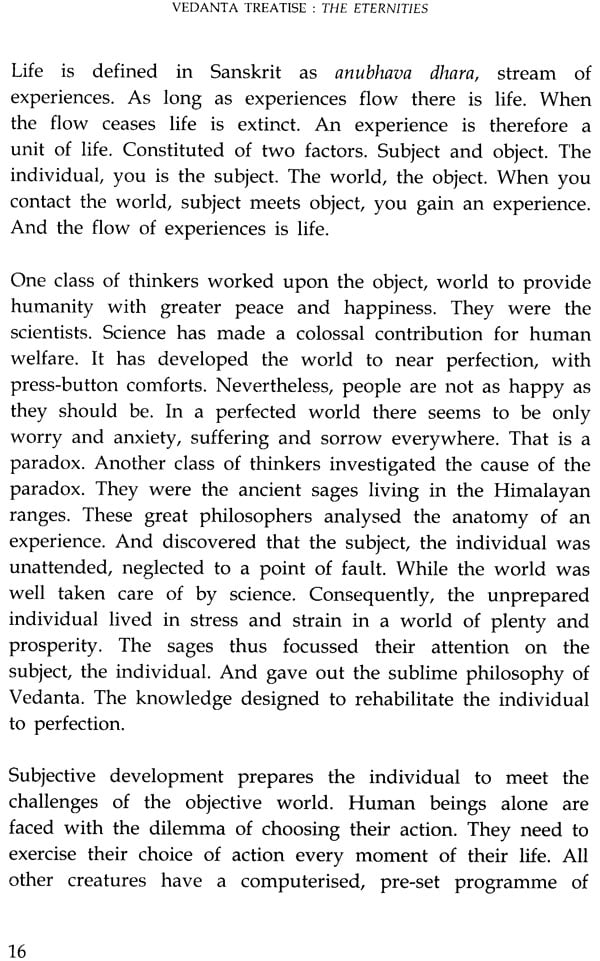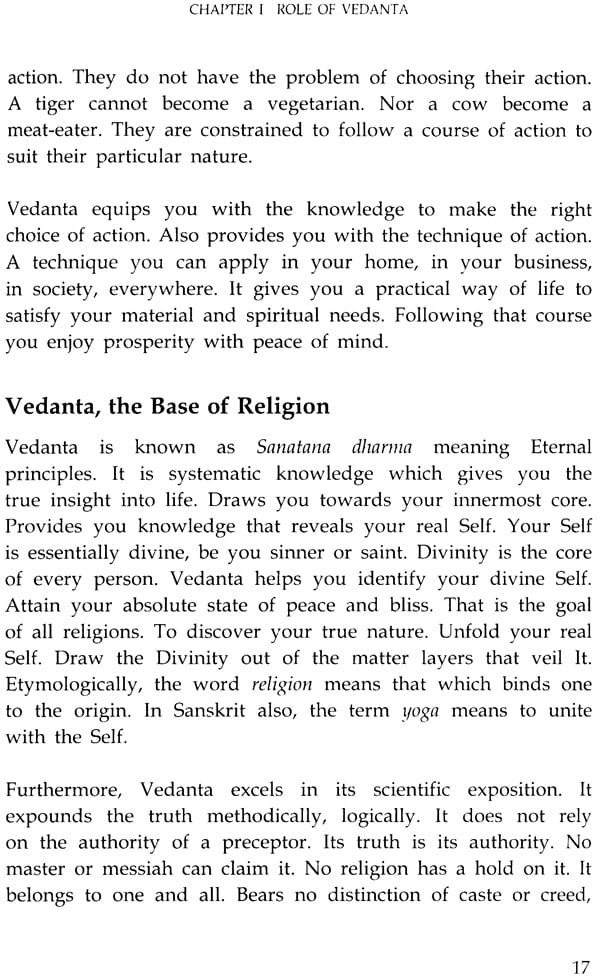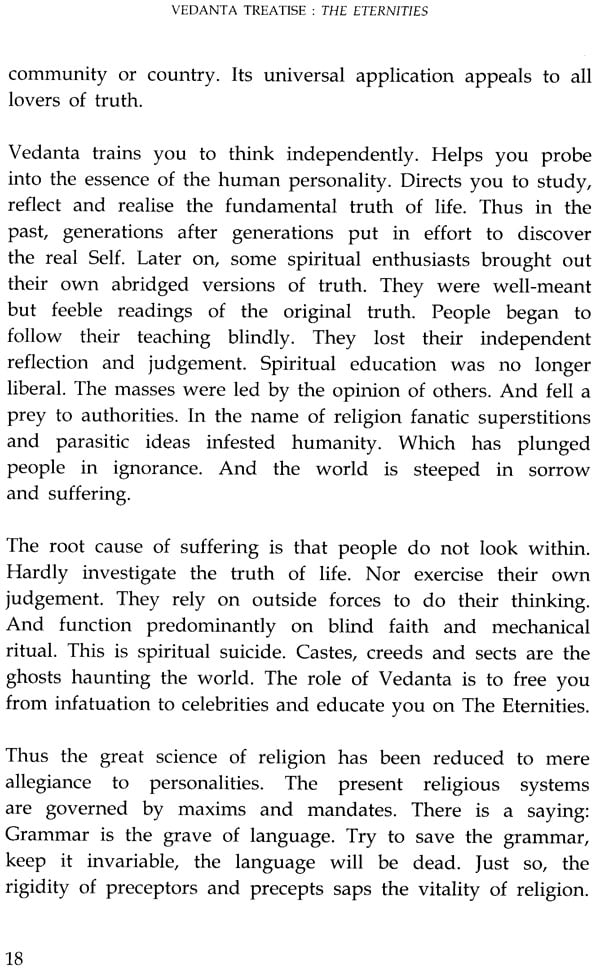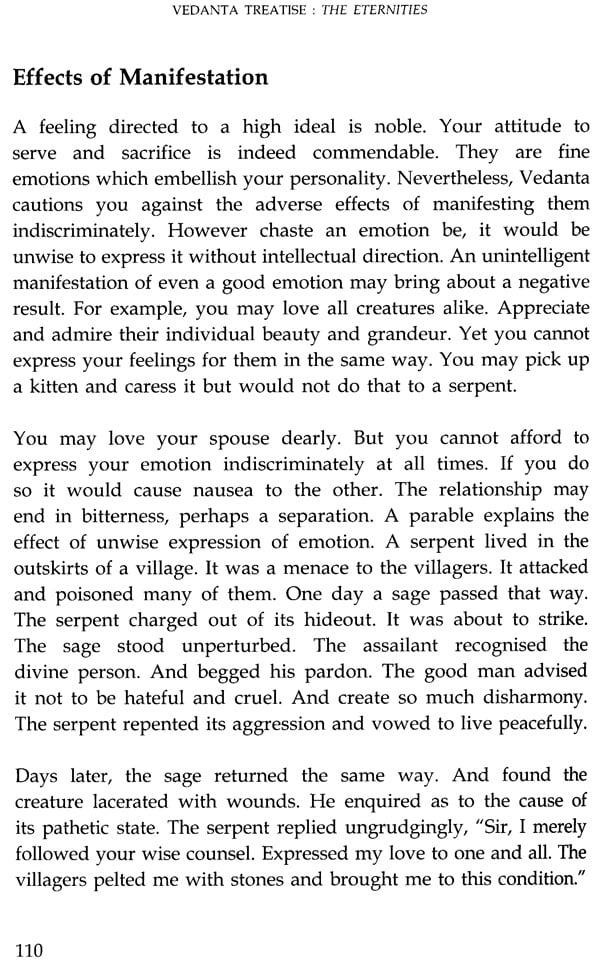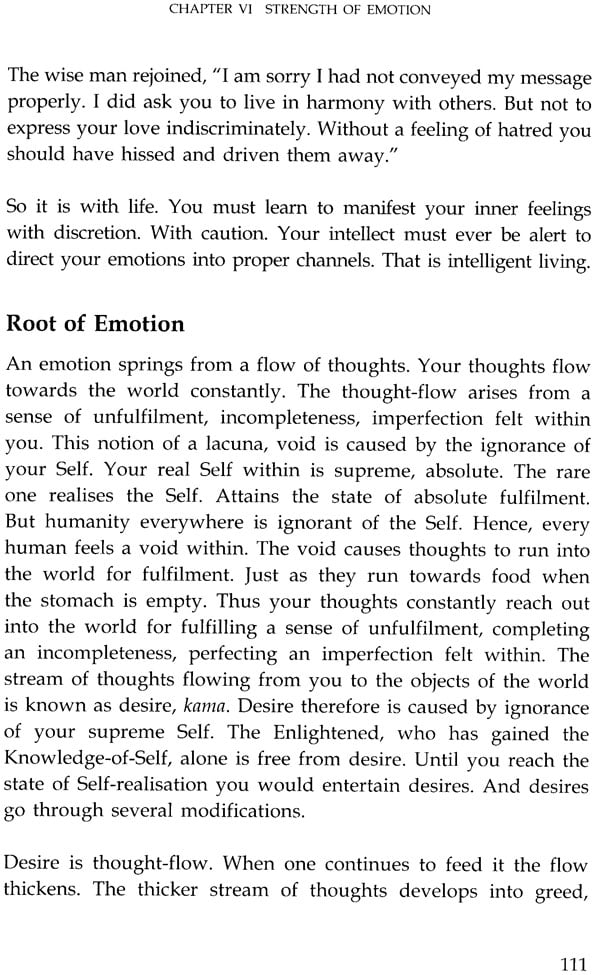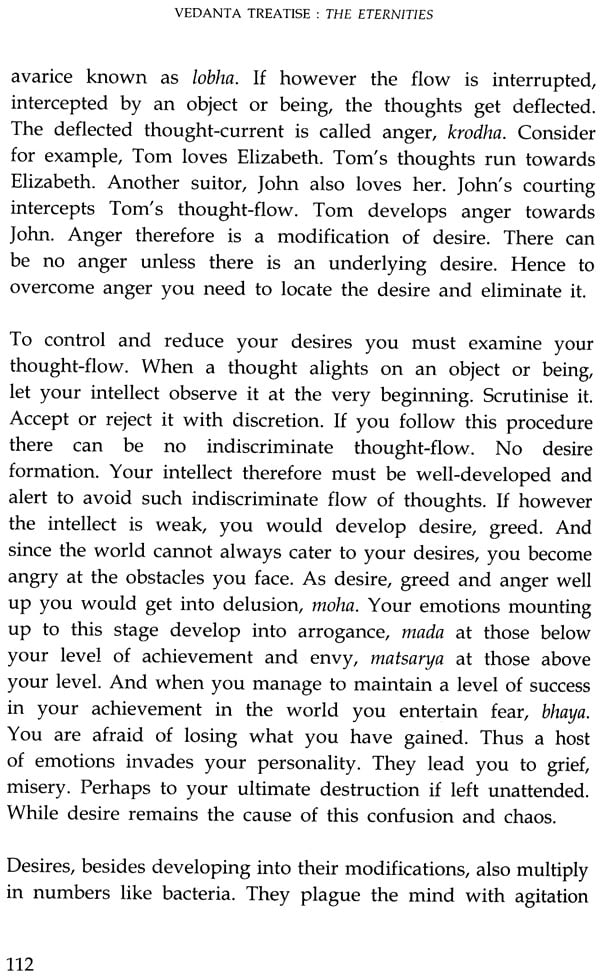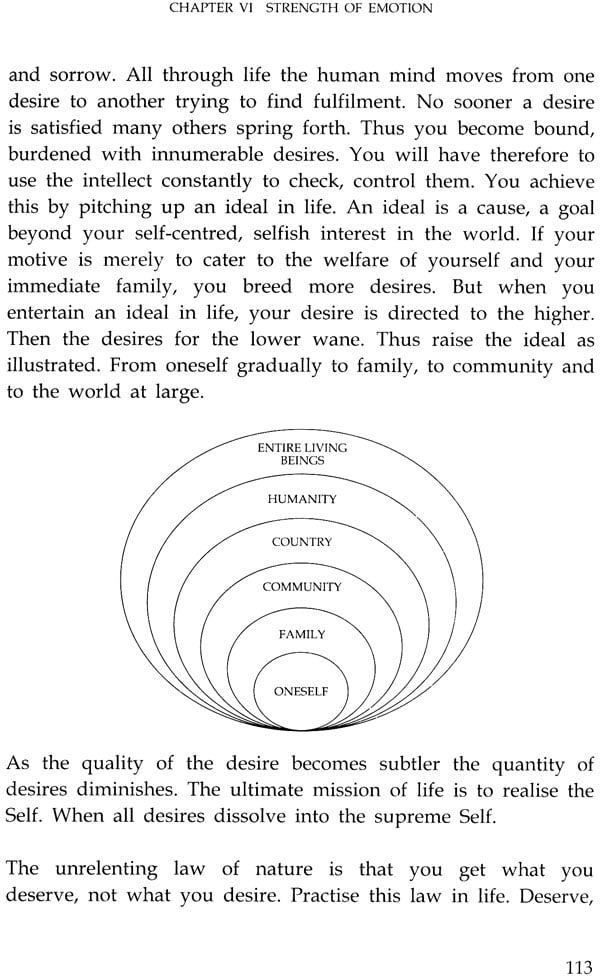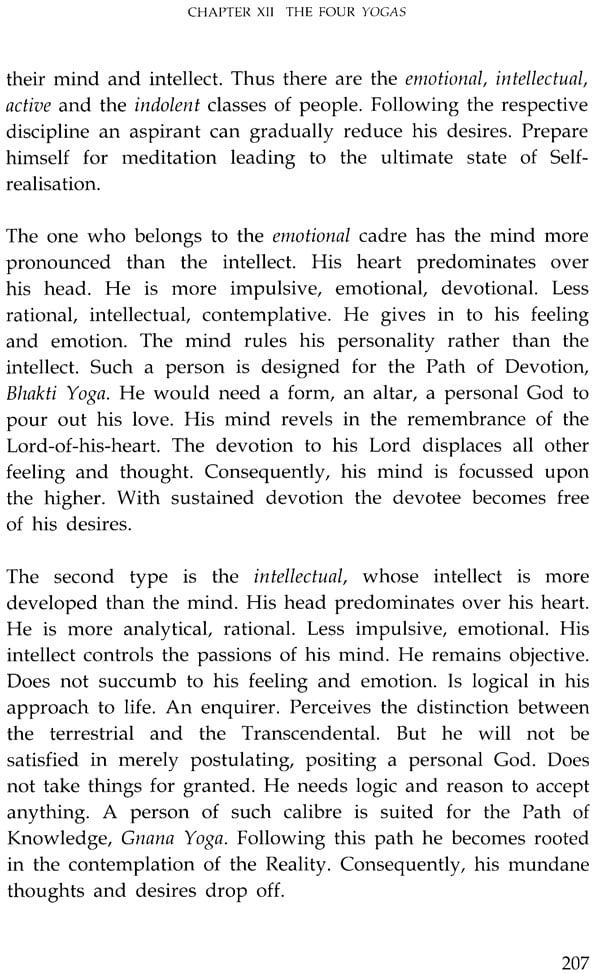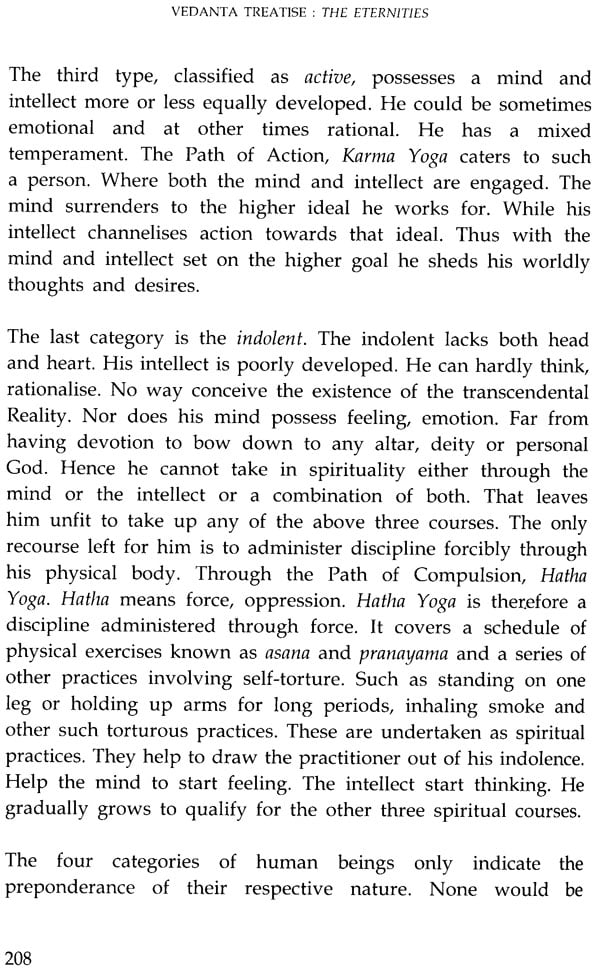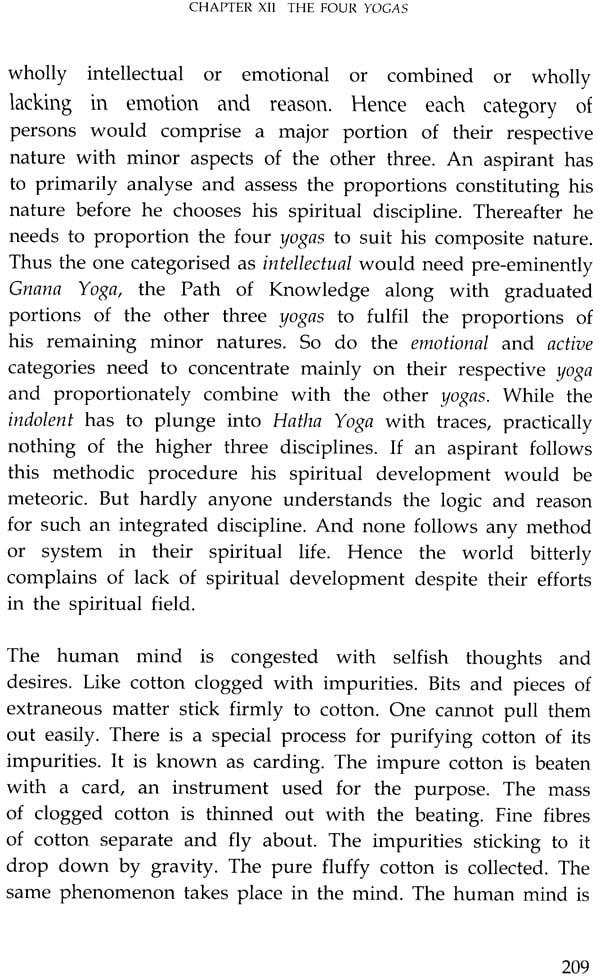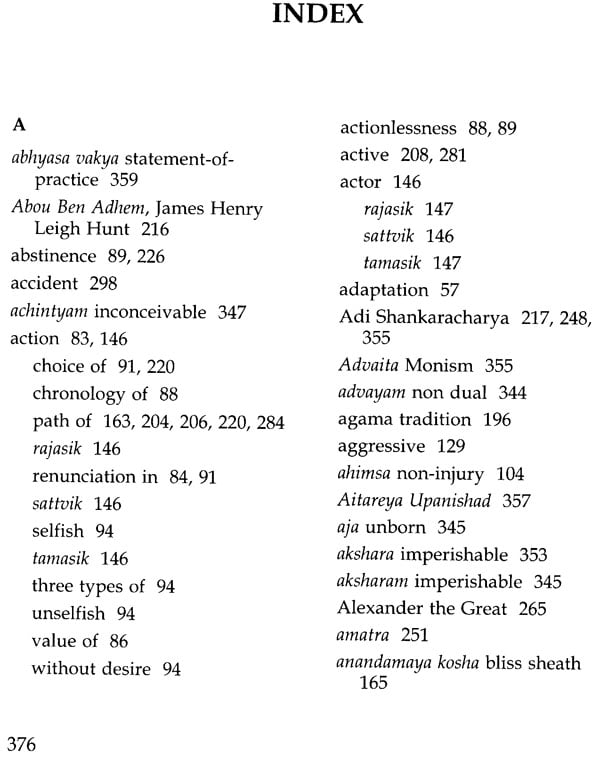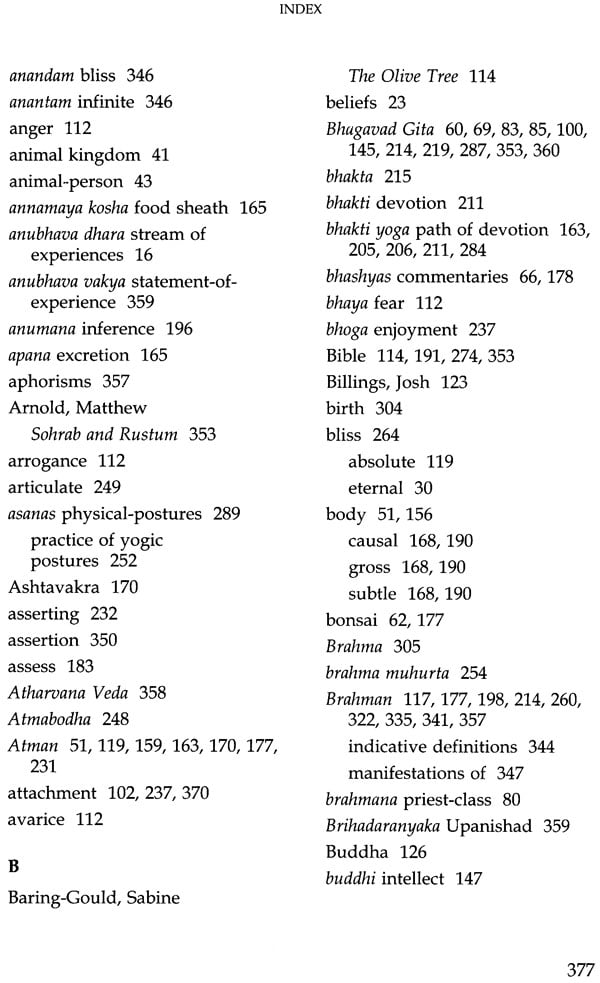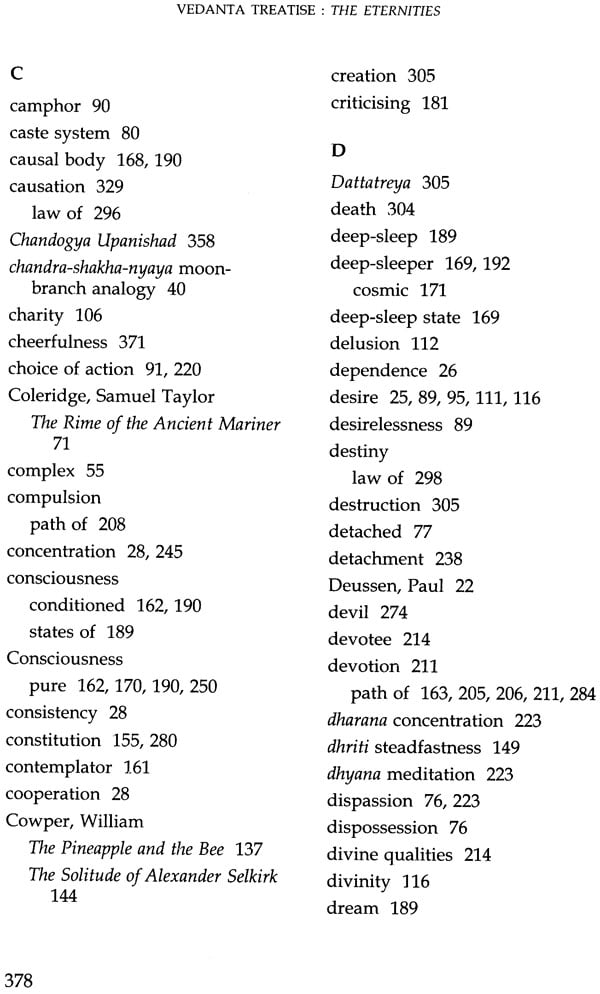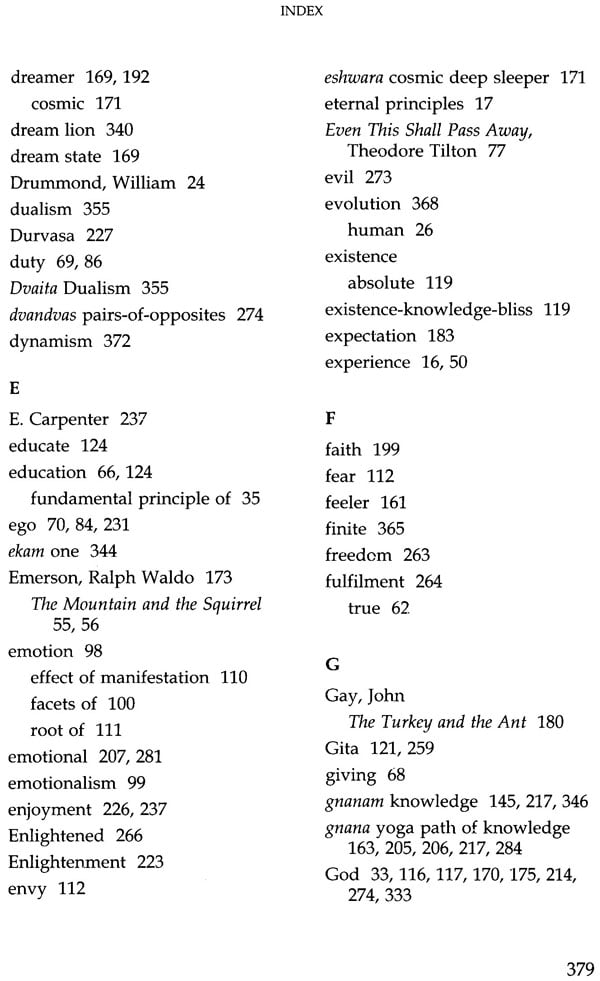
Vedanta Treatise (The Eternities)
Book Specification
| Item Code: | NAM282 |
| Author: | A. Parthasarathy |
| Publisher: | A. Parthasarathy, Mumbai |
| Language: | English |
| Edition: | 2020 |
| ISBN: | 9789381094167 |
| Pages: | 400 (11 B/W and 5 Color Illustrations) |
| Cover: | Paper Back |
| Other Details | 8.0 inch X 6.0 inch |
| Weight | 450 gm |
Book Description
A. Parthasarathy is an internationally acclaimed philosopher with a multi-disciplined academic base including postgraduation from London University. He has researched for over sixty years on the state of human beings and focused on the urgent need to revive, rehabilitate the human intellect. His resolve has emerged into four distinct avenues of service:
Vedanta Academy
Parthasarathy founded the Academy in January 1988 in Malavli Hills, 108 kms from Mumbai, India. It offers three-year residential courses designed to build intellectual ability and instil higher values of life in students from India and abroad.
Public Discourses
His discourses on intellectual development have captivated audiences the world over for more than fifty years. And have been widely acclaimed by prestigious universities, institutions and organisations.
Corporate Seminars
He has been a distinguished resource of the Young Entrepreneur's Organisation (YEO), Young President's Organisation (YPO), World President's Organisation (WPO), World Economic Forum and several multinational corporations.
Writings
Parthasarathy has published ten books which present ancient philosophical teachings and wisdom of thinkers from the East and West. Three of them have earned bestselling status. These ten books have also been combined into a single volume entitled The Complete Works of Swami Parthasarathy.
The Vedanta Treatise presents the ancient philosophy of Vedanta. A philosophy which enunciates the eternal principles of life and living. Living is an art, a skill, a technique. Few have understood it to be so in the span of human history. Nevertheless, you need to learn and practise the technique of living. As you would for playing a musical instrument or flying an aircraft.
The world today is unaware of this process of learning. It is not taught in a school or university. Nor in a moral or religious institution. Thus people go through a mechanical way of living merely following a routine of their predecessors. They lack this fundamental knowledge of living. And become victims of stress and strain.
People everywhere have lost the pleasure in action. They try to find peace and happiness by abstaining from action. Hence everyone looks forward to weekend and vacation. Even seeks premature retirement from work. This is a human weakness. Do not fall a prey to it. If you cannot find peace and happiness in action you can never find it through abstaining.
The world presents two distinct classes of people. One class is active, productive and prosperous. The western world seems to fit into this category. But by their own admission they have lost their peace of mind. While the other class of people is relatively peaceful and happy but without much action. Since they lack action they are not productive, prosperous. Some of the eastern countries face this problem. Thus there is action without peace on one side and peace without action on the other. One wonders if it is possible to combine dynamic action with mental peace. Vedanta provides the answer. The few who have imbibed the knowledge of Vedanta, learnt and practised the technique of living, live a dynamic life of action while enjoying perfect peace and happiness within.
Above all, the Treatise helps you evolve to greater heights in your own spiritual path. It provides you with the knowledge and guidance to reach the ultimate in human perfection. The goal of Self-realisation.
The book contains twenty-one chapters spread over three sections. The first section introduces the concept of Vedanta to help those unfamiliar with it. The second deals more with its practical application. How Vedanta can be ingrained in your lives. The final section covers the highest tenets of its philosophy culminating in the transcendental experience. It ploughs through human ignorance and delusion to discover the pristine glory of one's supreme Self.
Section I: Introduction to Vedanta
The first section introduces Vedanta to the layperson. Vedanta is a systematic knowledge which explains the meaning and purpose of your existence in the world. A knowledge that is founded on its own authority. It trains you to think for yourself. To analyse, investigate and realise the quintessence of life. Not to submit yourself to blind faith, superstitious belief or mechanical ritual. Ultimately, it leads you to spiritual Enlightenment.
The knowledge of the unknown can be gained only through the use of known factors. Therefore, to unravel the mystery of God you need to use the world of objects and beings known to you. Start with the study of the world, the individual and the relationship between them.
How are you to relate with the world to find peace and harmony? It is not the world that bothers you as you believe it to be. But your relationship with it. You need to learn the principles of right living. Change the character of your action from selfishness to selfless service. Mend the quality of your emotion from preferential attachment to universal love. Raise your knowledge from the mundane to the supreme Self within. Thus you shall reach the culmination of human life, the ultimate state of peace and bliss, the goal of religion.
Section 11: Practical Vedanta
The second section covers the practical application of Vedanta in life. Explains the composition of a human being. The five layers of the human personality enveloping the inner Self. The three states of conditioned-consciousness known as waking, dream and deep-sleep. Every human being goes through the cycle of these states. None realises the pure Consciousness, the Core of one's being. Vedanta directs you to discover the Core, the supreme Self within.
Humans fall under four distinct classes depending on the development of their mind and intellect: the predominantly emotional, predominantly intellectual, balanced in both, underdeveloped in both. Accordingly the four paths of Devotion Bhakti, Knowledge Gnana, Action Karma and Compulsion Hatha are prescribed respectively for their spiritual development. Practising these disciplines the seeker evolves to the state of dispassion. Which prepares him to enter the final stage of meditation. And through meditation he reaches Self - realisation.
A Self-realised person is one with God. He revels in absolute peace and bliss. Becomes a beacon for the rest of the world to follow and steer their lives towards evolution.
Section III: The Essence of Vedanta
The third section expounds the real philosophy of life. Exposes the exact nature of the terrestrial world. Points out the transcendental Reality beyond the phenomenal world. Helps you discover that underlying Reality to be the supreme Self within.
| Preface | 9 | |
| Section I : | Introduction to Vedanta | |
| Chapter I | Role of Vedana | 15 |
| Science and Vedanta | 15 | |
| Vedanta, the Base of Religion | 17 | |
| Tributes to Vedanta | 21 | |
| Reason, the Sap of Vedanta | 23 | |
| Your real Self | 25 | |
| Vedanta procures Happiness | 27 | |
| Vedanta provides Material Prosperity | 28 | |
| Eternal Bliss within | 30 | |
| Chapter II | World and Human Being | 33 |
| Mystery of the Origin | 33 | |
| From the Known to the Unknown | 35 | |
| Composition of the World | 41 | |
| The Human Species | 42 | |
| Three Conditions of the Mind | 46 | |
| Chapter III | Life, Its Course | 50 |
| Composition of Life | 50 | |
| The Individual Mechanism | 51 | |
| Nature of the World | 56 | |
| Course of Life | 58 | |
| Goal of Life | 60 | |
| Chapter IV | Code of Living | 65 |
| Scope of Spiritual Education | 65 | |
| Elements of Right Living | 68 | |
| The Three Temperaments | 72 | |
| The Caste System | 80 | |
| Chapter V | Exigency of Action | 83 |
| Action is Inevitable | 83 | |
| Value of Action | 86 | |
| Chronology of Action | 88 | |
| Renunciation in Action | 91 | |
| Three Types of Action | 94 | |
| Chapter VI | Strength of Emotion | 98 |
| Emotion and Intellection | 98 | |
| Facets of Emotion | 100 | |
| Love | 101 | |
| Kindness | 104 | |
| Pity | 105 | |
| Charity | 106 | |
| Effects of Manifestation | 110 | |
| Root of Emotion | 111 | |
| Desire veils the Self | 116 | |
| Chapter VII | Light of Wisdom | 117 |
| Veil of Ignorance | 117 | |
| How to Gain Wisdom | 122 | |
| The Aggressive and the Passive | 129 | |
| Joy of Learning | 133 | |
| Chapter VIII | Culmination of Human Life | 134 |
| The Role of Religion | 134 | |
| Consummation of Life | 141 | |
| Personality Chart | 144 | |
| Knowledge Gnanam | 145 | |
| Action Karma | 146 | |
| Actor Karta | 146 | |
| Intellect Buddhi | 147 | |
| Steadfastness Dhriti | 149 | |
| Happiness Sukham | 150 | |
| Renunciation Tyaga | 151 | |
| Prepare your Chart | 151 | |
| Section II : | Practical Vedanta | |
| Chapter IX | The Human Composition | 155 |
| Basic Constitution | 155 | |
| Composite Personality | 159 | |
| Personality Layers | 164 | |
| Food Sheath | 165 | |
| Vital-air Sheath | 165 | |
| Mental Sheath | 166 | |
| Intellectual Sheath | 167 | |
| Bliss Sheath | 168 | |
| Gross, Subtle and Causal Bodies | 168 | |
| Waker, Dreamer and Deep-sleeper | 169 | |
| Chapter X | Self-Analysis | 172 |
| Enquiry into Yourself | 172 | |
| Your Self is Supreme Reality | 174 | |
| Drift in Religion | 177 | |
| The Problem of Introversion | 179 | |
| Practical Exercises | 185 | |
| Chapter XI | The States of Consciousness | 189 |
| Waking, Dream and Deep-sleep | 189 | |
| The Fourth State | 194 | |
| Assurance of Vedanta | 199 | |
| Path of Reality | 201 | |
| Chapter XII | The Four Yogas | 206 |
| Four Spiritual Disciplines | 206 | |
| Bhakti Yoga Path of Devotion | 211 | |
| Gnana Yoga Path of Knowledge | 217 | |
| Karma Yoga Path of Action | 220 | |
| Chapter XIII | Renunciation | 224 |
| What is Renunciation | 224 | |
| Way to Success | 233 | |
| Renunciation is Bliss | 236 | |
| Renunciation heralds Meditation | 240 | |
| Chapter XIV | Meditation | 243 |
| Technique of Meditation | 243 | |
| Principle of Meditation | 247 | |
| The Symbol Om | 248 | |
| Procedural Details | 251 | |
| Self-Realisation | 255 | |
| Chapter XV | The State of Self-Realisation | 257 |
| Self-realised Person | 257 | |
| His Intrinsic Being | 258 | |
| His Extrinsic Conduct | 265 | |
| Impact of World on Him | 271 | |
| His Impact on World | 273 | |
| Section III : | The Essence Vedanta | |
| Chapter XVI | Use and Abuse of Religion | 279 |
| Individual Diagnosis and Treatment | 279 | |
| Positive Religion | 284 | |
| Negative Religion | 287 | |
| Impediments in the Spiritual Path | 289 | |
| Chapter XVII | Law of Causation | 296 |
| The Supreme Law | 296 | |
| Law of Destiny | 298 | |
| Law of Karma | 300 | |
| Birth and Death | 304 | |
| Theory of Reincarnation | 307 | |
| Chapter XVIII | Theory of Perception | 315 |
| Phenomenon of the World | 315 | |
| Idealism | 317 | |
| Realism | 319 | |
| Vedantic Theory of Perception | 320 | |
| Chapter XIX | The Illusions: Maya | 328 |
| When, Whence, Wherefore this World | 328 | |
| World, an Illusion | 331 | |
| Intrinsic and Extrinsic Illusions | 333 | |
| World is God | 337 | |
| Why heed an Illusion | 339 | |
| Chapter XX | The 'Supreme Reality | 341 |
| The Supreme God | 341 | |
| Manifestations of Brahman | 347 | |
| Process of Negation and Assertion | 350 | |
| Idea of Trinity | 353 | |
| Three Schools of Thought | 355 | |
| Chapter XXI | That Thou Art | 357 |
| The Four Aphorisms | 357 | |
| I am God | 360 | |
| Finite is Infinite | 365 | |
| Characteristics of Self-development | 368 | |
| Know thy Self | 373 | |
| Index | 376 |
